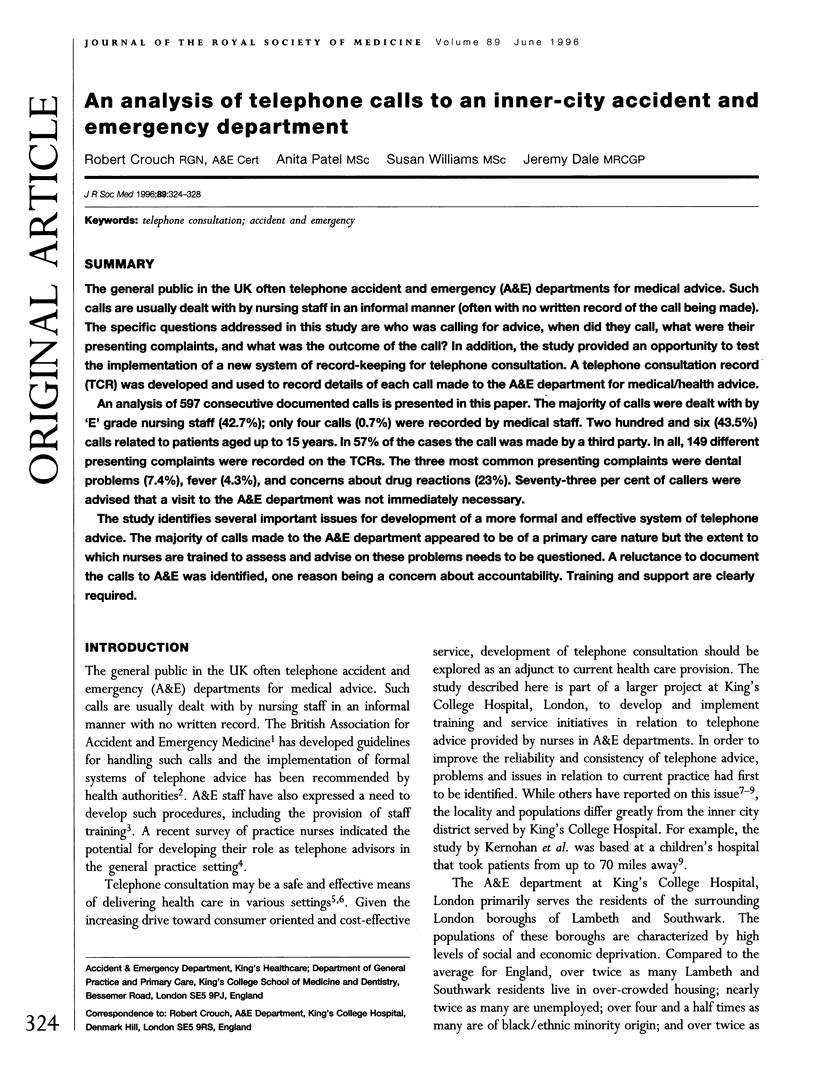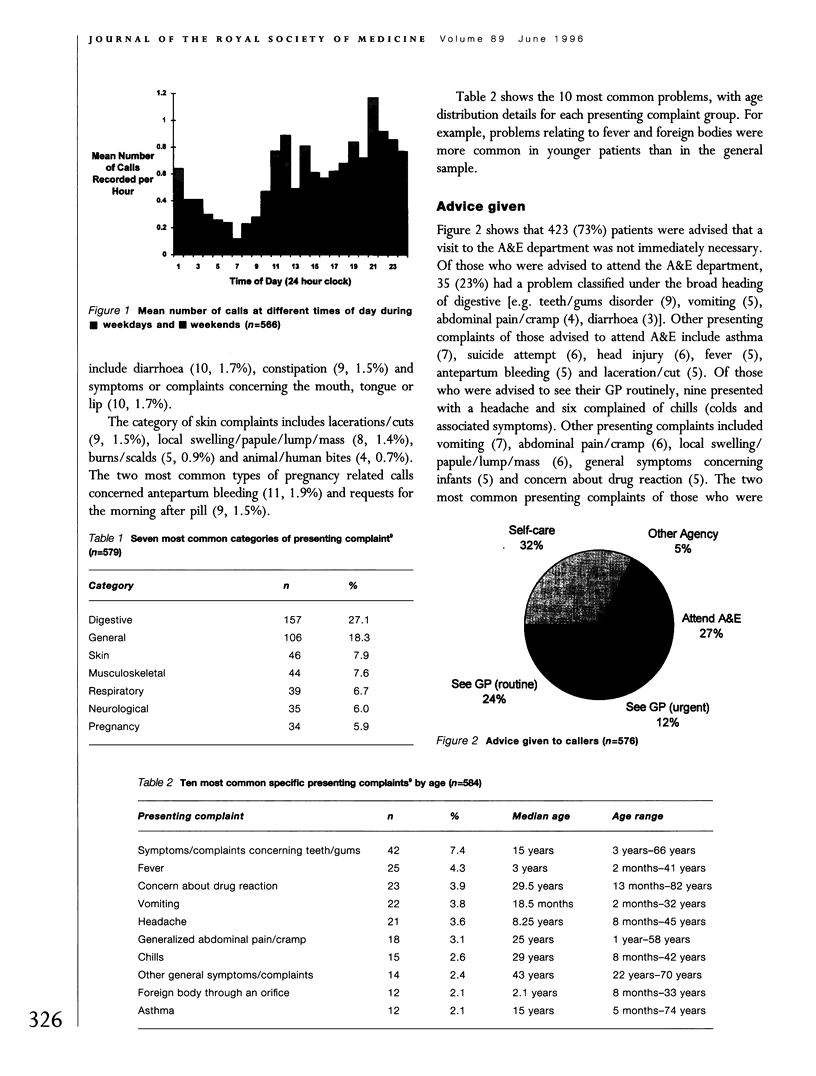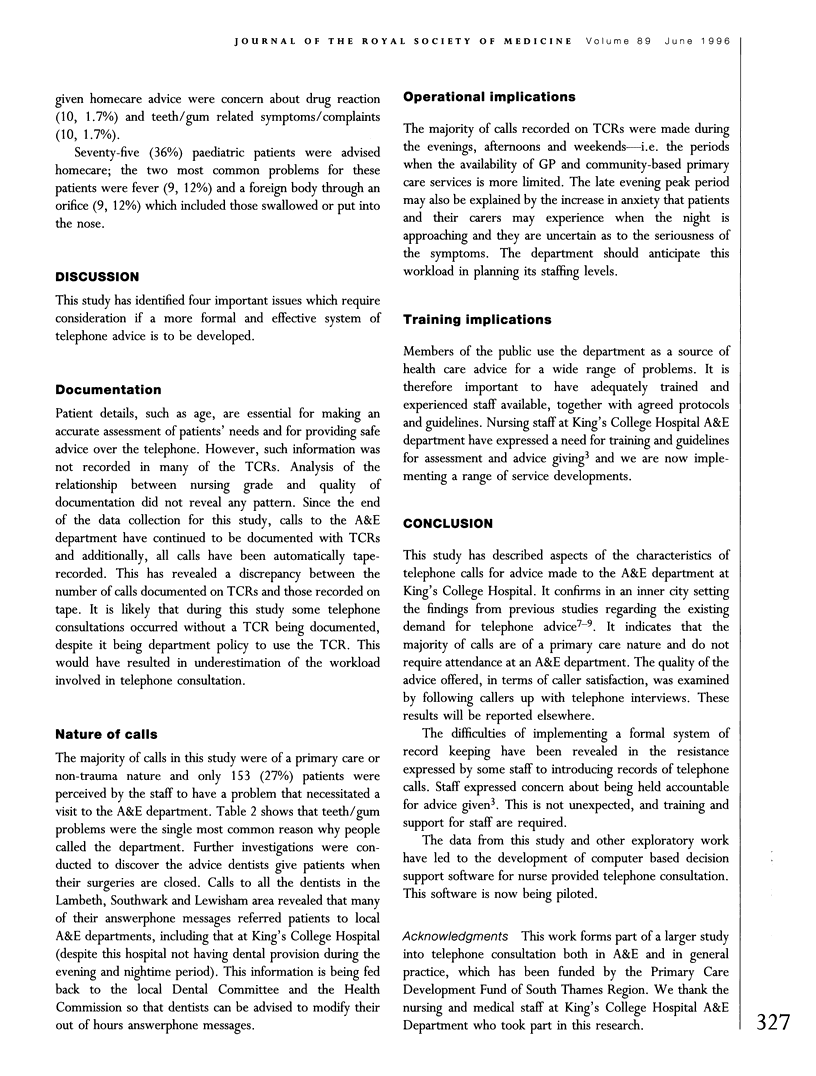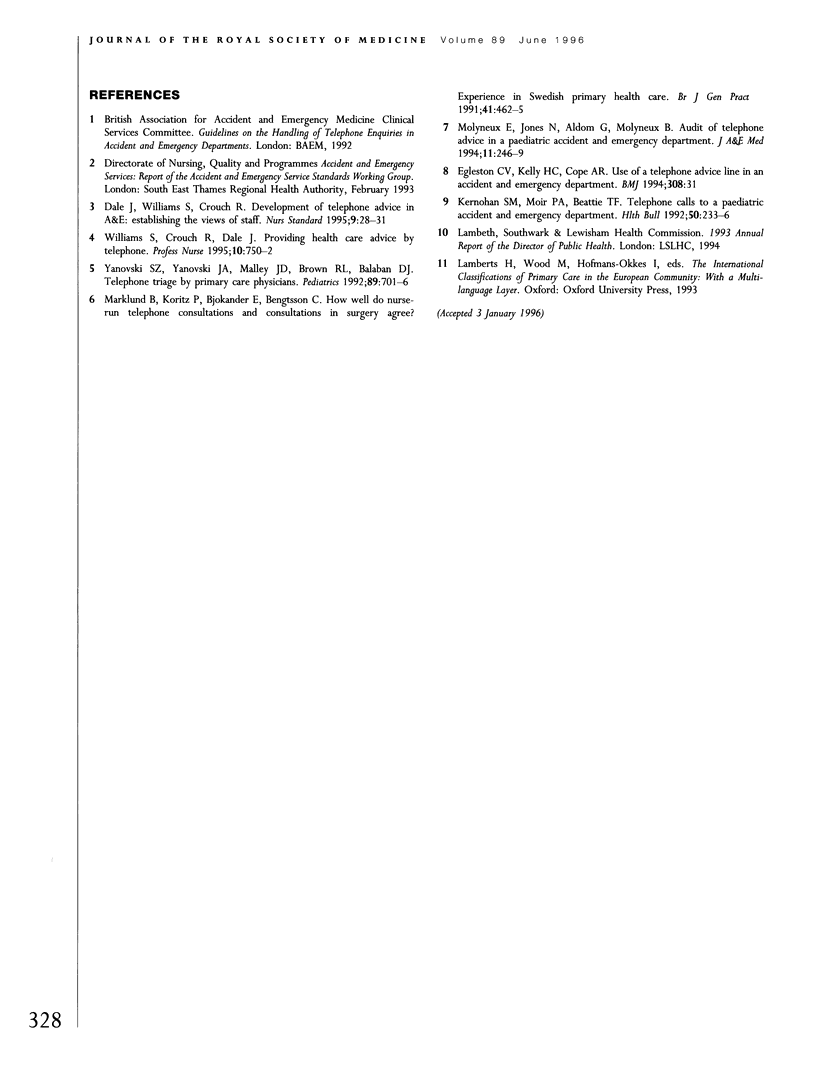Abstract
The general public in the UK often telephone accident and emergency (A&E) departments for medical advice. Such calls are usually dealt with by nursing staff in an informal manner (often with no written record of the call being made). The specific questions addressed in this study are who was calling for advice, when did they call, what were their presenting complaints, and what was the outcome of the call? In addition, the study provided an opportunity to test the implementation of a new system of record-keeping for telephone consultation. A telephone consultation record (TCR) was developed and used to record details of each call made to the A&E department for medical/health advice. An analysis of 597 consecutive documented calls is presented in this paper. The majority of calls were dealt with by 'E' grade nursing staff (42.7%); only four calls (0.7%) were recorded by medical staff. Two hundred and six (43.5%) calls related to patients aged up to 15 years. In 57% of the cases the call was made by a third party. In all, 149 different presenting complaints were recorded on the TCRs. The three most common presenting complaints were dental problems (7.4%), fever (4.3%), and concerns about drug reactions (23%). Seventy-three per cent of callers were advised that a visit to the A&E department was not immediately necessary. The study identifies several important issues for development of a more formal and effective system of telephone advice. The majority of calls made to the A&E department appeared to be of a primary care nature but the extent to which nurses are trained to assess and advise on these problems needs to be questioned. A reluctance to document the calls to A&E was identified, one reason being a concern about accountability. Training and support are clearly required.
Full text
PDF




Selected References
These references are in PubMed. This may not be the complete list of references from this article.
- Dale J., Williams S., Crouch R. Development of telephone advice in A&E: establishing the views of staff. Nurs Stand. 1995 Feb 15;9(21):28–31. doi: 10.7748/ns.9.21.28.s37. [DOI] [PubMed] [Google Scholar]
- Egleston C. V., Kelly H. C., Cope A. R. Use of a telephone advice line in an accident and emergency department. BMJ. 1994 Jan 1;308(6920):31–31. doi: 10.1136/bmj.308.6920.31. [DOI] [PMC free article] [PubMed] [Google Scholar]
- Kernohan S. M., Moir P. A., Beattie T. F. Telephone calls to a paediatric accident and emergency department. Health Bull (Edinb) 1992 May;50(3):233–236. [PubMed] [Google Scholar]
- Marklund B., Koritz P., Bjorkander E., Bengtsson C. How well do nurse-run telephone consultations and consultations in the surgery agree? Experience in Swedish primary health care. Br J Gen Pract. 1991 Nov;41(352):462–465. [PMC free article] [PubMed] [Google Scholar]
- Molyneux E., Jones N., Aldom G., Molyneux B. Audit of telephone advice in a paediatric accident and emergency department. J Accid Emerg Med. 1994 Dec;11(4):246–249. doi: 10.1136/emj.11.4.246. [DOI] [PMC free article] [PubMed] [Google Scholar]
- Williams S., Crouch R., Dale J. Providing health-care advice by telephone. Prof Nurse. 1995 Sep;10(12):750–752. [PubMed] [Google Scholar]
- Yanovski S. Z., Yanovski J. A., Malley J. D., Brown R. L., Balaban D. J. Telephone triage by primary care physicians. Pediatrics. 1992 Apr;89(4 Pt 2):701–706. [PubMed] [Google Scholar]


